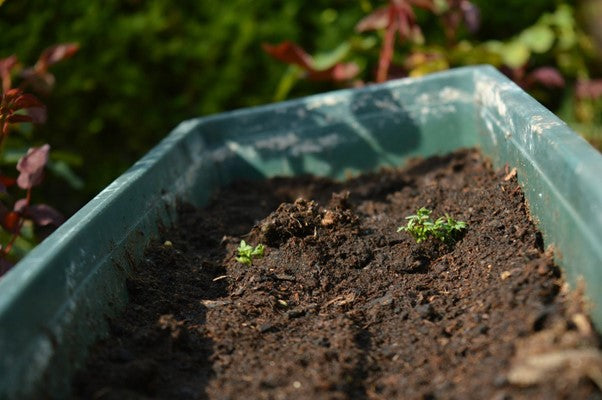Straining your eyes? You can listen to this automated AI version of the article here:
When it comes to the best containers for indoor living soil, one size does not fit all. The size of the container you choose will depend on several factors. Some plants need a large container in order to thrive, while others do just fine in a smaller pot. It's important to choose a container that is the right size for your plant so that it has plenty of room to grow.
Best Container Size for Indoor Living Soil: Factors
Container sizing will depend on:
- The climate you live in: If you live in a climate with long, hot summers, you will need a bigger container than if you live in a climate with shorter, cooler summers. If you live in an area with a hot climate, you will also need to water your plants more often. This means that you will need a bigger container so that your plants have enough room to absorb all the water they need.
- Let there be light: When determining the best containers for indoor living soil, you will need to consider the amount of light they need and how much space you have available. Choose a container that is large enough to accommodate the roots of your plant and has good drainage.
- How often you want to water your plants: If you water your plants more often, you will need a bigger container. This is because the roots of your plants will need more space to absorb all the water they need.
- Reamending: If you want to reuse your soil, reamending means dumping out your five-gallon container and remixing it with ingredients, for example, a reamending mix. This ensures that your mix is still aerated and has the ideal amount of drainage. The process of reamending also allows you to add or remove ingredients as needed., and because you are adding to the original soil, a larger container is preferable. This is why professional growers often use large fabric pots that they can reamend every season.
The goal is to use a container that is the right size for your plant, while also considering factors like reamending and drainage. Finding a balance between these factors is the key.
Container Size: Our Recommendations
Five-gallon containers can work for indoor living soil. However, we recommend using a drip system and replanting into the soil with a top dress and feeding. The roots will have a much easier time finding the moisture and nutrients they need in the soil, and the plant will be better off in the long run.
We prefer a larger container because you can produce the same good yield, with less interaction required. Monitoring is essential because there's a difference between enough nutrients in the soil and enough available to the plant. For example, if you get a fast-growing plant that becomes bigger than its container, more than likely it's going to outpace the biological release.
We recommend that you start with a 15-gallon container because it’s easier to deal with depleted soil in a larger container than it is in a smaller one. Plus, you'll have more room to grow!
Converting Gallons to Litres
A gallon used to be the standard unit of volume for liquid measure in many countries including NZ, Australia, UK, and the US. The imperial gallon was first defined as 10 lb of water but was later redefined as exactly 4.54609 litres.
Gallon remains an imperial and US customary unit of volume. The imperial gallon equals approximately 1.2 US gallons or 4.5 litres. There are four quarts in a gallon, two pints in a quart and 16 fluid ounces in a pint. So there are 128 fluid ounces or 3785 ml in a gallon.
To convert from imperial gallons to litres, multiply the number of gallons by 4.54609 (or divide by 0.21997). For example, 5 imperial gallons is 5 x 4.54609 = 22.73045 litres.
To convert US gallons to litres, multiply the number of gallons by 3.78541 (or divide by 0.26417). For example, 5 US gallons is 5 x 3.78541 = 18.92705 litres.
To convert gallons to litres, multiply the gallon value by 3.78541. For example, to find out how many litres in a half gallon, multiply 0.5 by 3.78541, that makes 1.89271 L in a half gallon.
To convert imperial gallons to litres, multiply the imperial gallon value by 4.54609.
With reference to the best containers for indoor living soil, we mention containers of five-gallon, 15 gallon, and 30-gallon. The respective conversions for these are:
- Five gallons: Rounds up to 19 litres
- 15 gallons: Rounds up to 57 litres
- 30 gallons: Rounds up to114 litres
Best Containers for Indoor Living Soil: In A Nutshell
When it comes to the best containers for indoor living soil, there are a few things you need to consider:
The size of your plant, how often you water it, and whether or not you plan on reamending your soil all play a role in what size container is best for you. We recommend using a 15-gallon container if you want an easy-to-manage project that still yields good results., and a 30-gallon container if you're looking for even more yield with less interaction required from you. Keep in mind that these are just our recommendations, so be sure to do your own research and find the option that works best for you.
What are some common mistakes people make when choosing containers for indoor plants?
Choosing the right container size, material and drainage, matching it to the plant's needs and repotting regularly is crucial for the health of indoor plants.
How often should I water my indoor plants?
Water indoor plants when the top inch of soil feels dry, considering the plant type, container size and environmental conditions, to avoid harm from over or under-watering.


